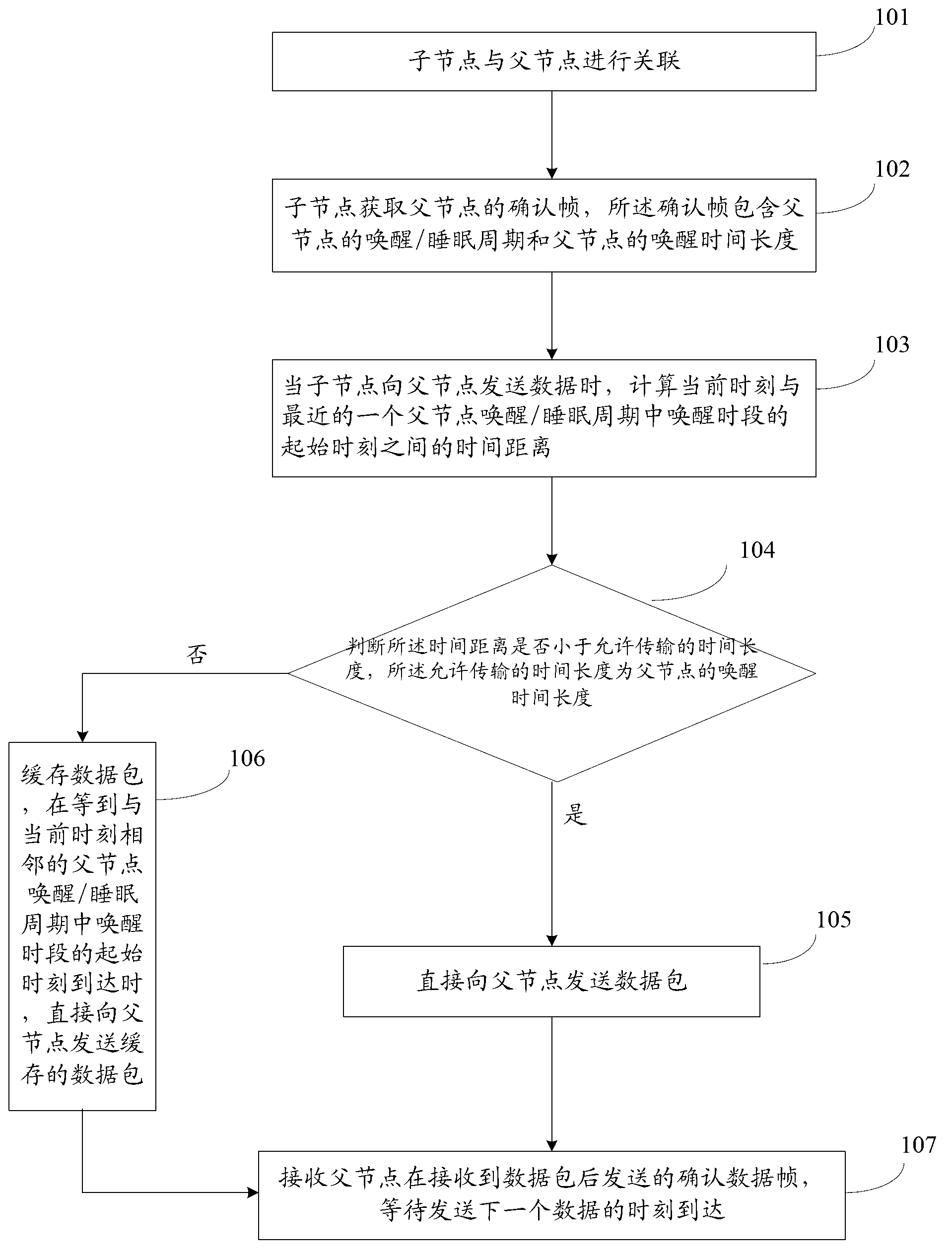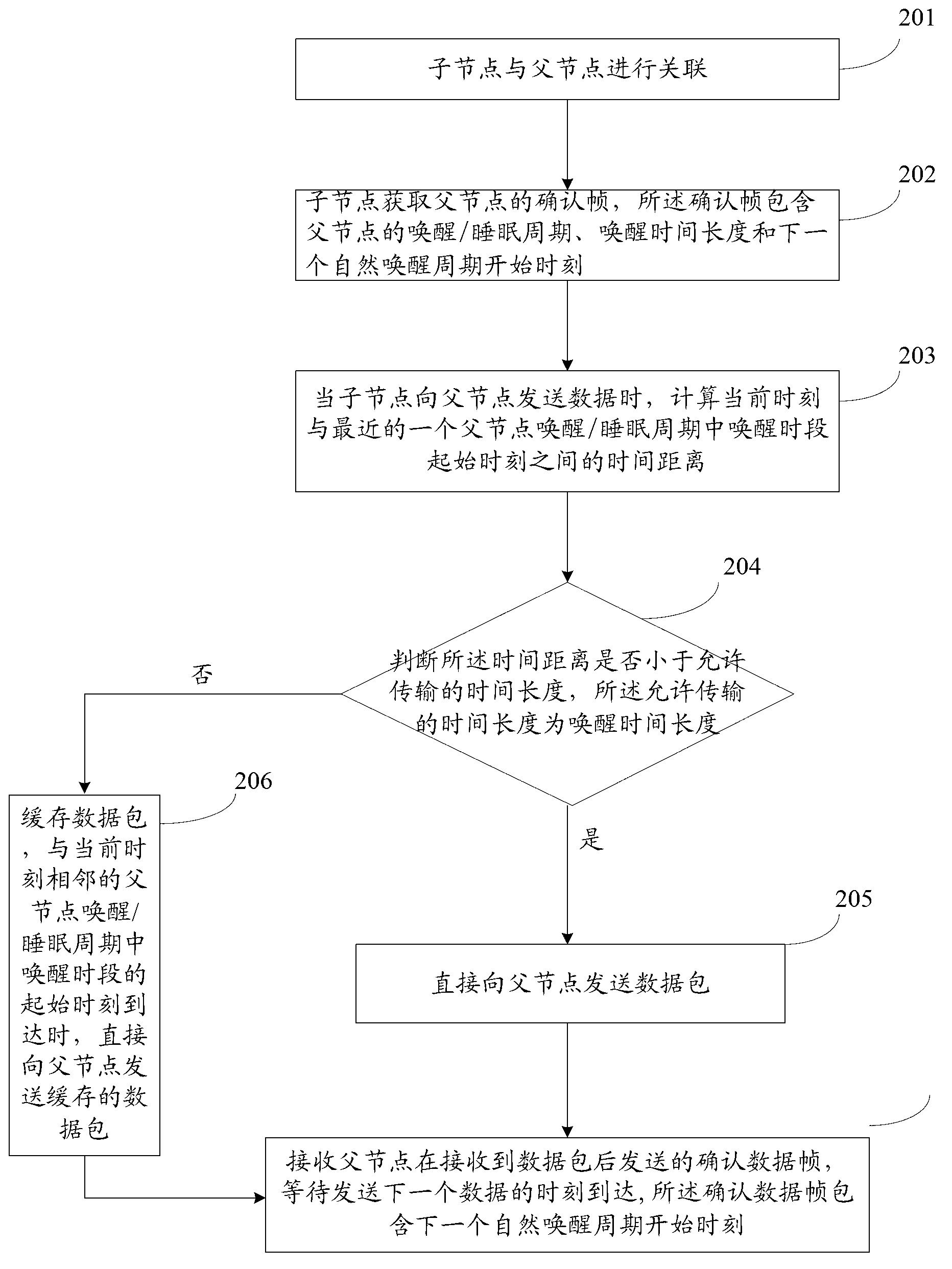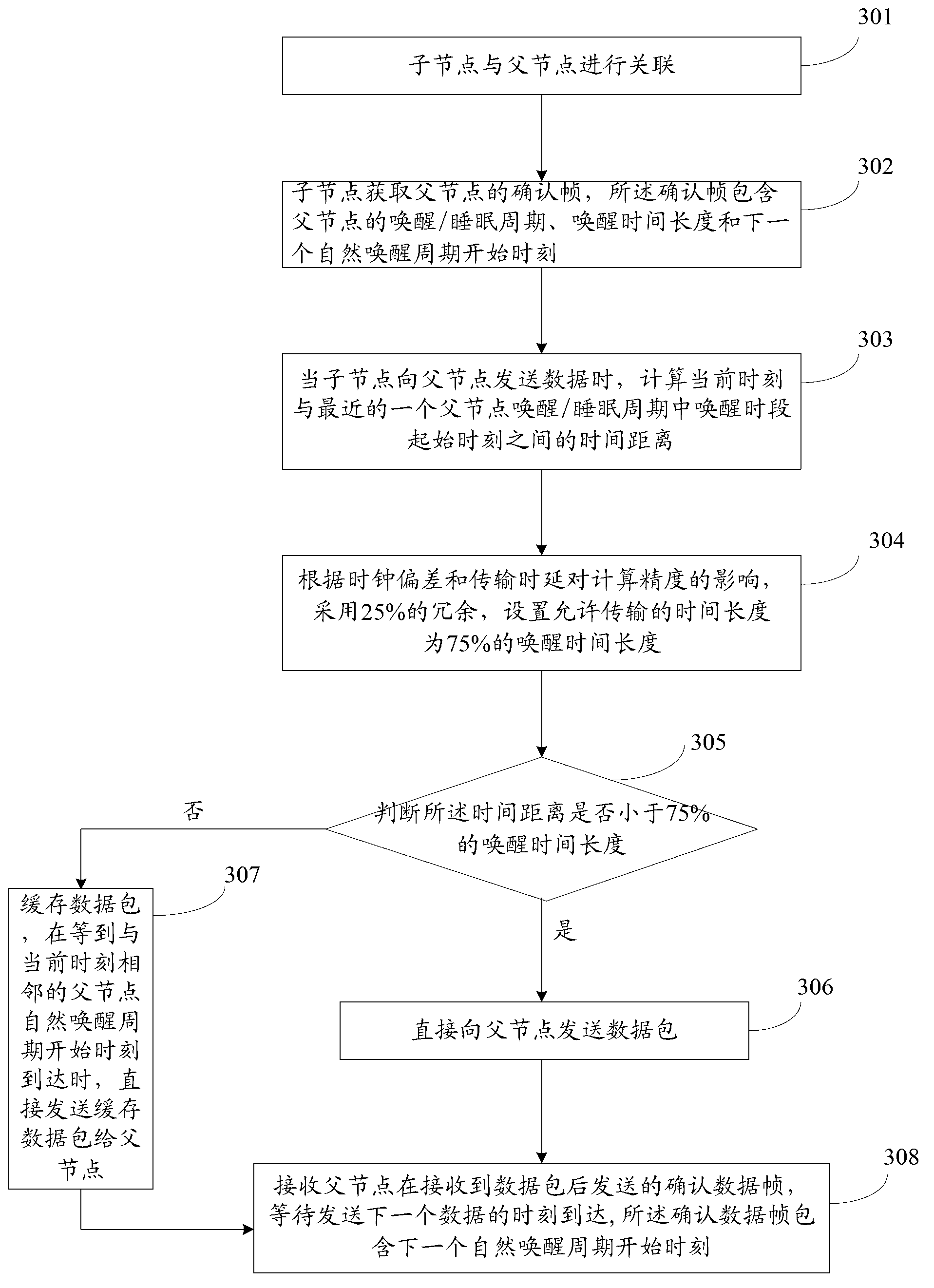Device and method for node synergy
A node and parent node technology, applied in the field of node coordination methods and devices, can solve problems such as reducing energy efficiency and energy waste, and achieve the effect of improving energy efficiency and network reliability
- Summary
- Abstract
- Description
- Claims
- Application Information
AI Technical Summary
Problems solved by technology
Method used
Image
Examples
Embodiment 1
[0032] see figure 1 , which is a method flowchart of a node coordination method disclosed in Embodiment 1 of the present invention, including the following steps:
[0033] Step 101: the child node is associated with the parent node;
[0034] Step 102: the child node obtains the confirmation frame of the parent node, and the confirmation frame includes the wake-up / sleep cycle of the parent node and the wake-up time length of the parent node;
[0035] Step 103: When the child node sends data to the parent node, calculate the time distance between the current moment and the start moment of the wake-up period in the nearest wake-up / sleep cycle of the parent node;
[0036] Step 104: judging whether the time distance is less than the time length allowed for transmission, the time length allowed for transmission is the wake-up time length of the parent node;
[0037] Step 105: If yes, then directly send the data packet to the parent node;
[0038] Step 106: Otherwise, cache the da...
Embodiment 2
[0053] The node coordination method described in Embodiment 1 can achieve node synchronization and reduce network energy waste, but there are some problems in the accuracy of node synchronization and the effectiveness of data transmission, mainly due to clock deviation, and Data transmission delay and other issues, in order to solve the above problems, the present invention provides another node coordination method, for details, please refer to figure 2Another node coordination method shown specifically includes the following steps:
[0054] Step 201: Associate the child node with the parent node;
[0055] Step 202: the child node obtains the confirmation frame of the parent node, and the confirmation frame includes the parent node's wakeup / sleep cycle, wakeup time period and start time of the next natural wakeup cycle.
[0056] Step 203: When the child node sends data to the parent node, calculate the time distance between the current moment and the start moment of the wake...
Embodiment 3
[0072] In order to describe a node collaboration method provided by the present invention in more detail, the following is a specific node collaboration scenario as an example to describe, for details, please refer to image 3 , a method flowchart of another node coordination method, specifically including:
[0073] Step 301: Associate the child node with the parent node;
[0074] Step 302: the child node obtains the confirmation frame of the parent node, and the confirmation frame includes the wake-up / sleep cycle of the parent node, the length of wake-up time and the start time of the next natural wake-up cycle;
[0075] Step 303: When the child node sends data to the parent node, calculate the time distance between the current moment and the start time of the wake-up period in the nearest wake-up / sleep cycle of the parent node;
[0076] Step 304: According to the influence of the clock deviation and the transmission delay on the calculation accuracy, adopt 25% redundancy, a...
PUM
 Login to view more
Login to view more Abstract
Description
Claims
Application Information
 Login to view more
Login to view more - R&D Engineer
- R&D Manager
- IP Professional
- Industry Leading Data Capabilities
- Powerful AI technology
- Patent DNA Extraction
Browse by: Latest US Patents, China's latest patents, Technical Efficacy Thesaurus, Application Domain, Technology Topic.
© 2024 PatSnap. All rights reserved.Legal|Privacy policy|Modern Slavery Act Transparency Statement|Sitemap



